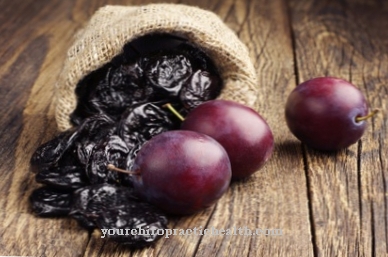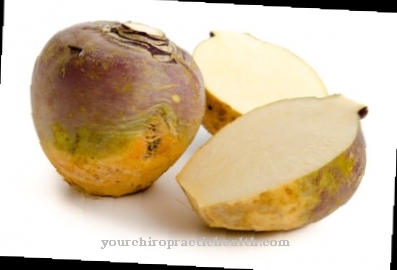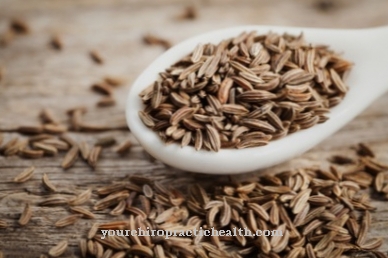As Edible fish all edible river, sea and marine fish are called. They can come from the wild, semi-wild keeping or fish farming. There are freshwater and saltwater fish, but seafood, shellfish and crustaceans are not edible fish.
What you should know about edible fish

Fish is an integral part of the human diet. It is often found in the traditional cuisine of ethnic groups that lived close to the sea or large lakes because they had natural access to fish. In these kitchens there is also a greater variety of fish species on the plate than in the kitchens of continental peoples.
Edible fish is not entirely unknown here either, but the focus is more on the types of fish that could also be caught in local rivers. In the case of food fish, a basic distinction is made between freshwater and saltwater fish, depending on the fish's habitat - however, some of these species are found in every body of water, including eels. Other food fish such as salmon return to freshwater to spawn, but are otherwise found in the sea and thus in salt water.
If today's environmental aspects are disregarded, edible fish is important for human nutrition due to its salt and iodine content.It is considered to be a low-fat source of protein that also contains relatively high levels of healthy omega-3 fatty acids. These fatty acids are found in small amounts in other foods, which is why they are so much the focus of a healthy diet. Edible fish is traded in various forms, ranging from live fish to frozen variants to smoked, pickled and preserved fish.
Most fish dishes are made from boiled, roasted or otherwise heat-cooked fish, but Japanese cuisine in particular also has forms of raw fish processing.
Importance to health
In the original sense, edible fish was considered a healthy source of omega-3 fatty acids, iodine, proteins and, depending on the type of fish, various other minerals.
With the exception of protein, these ingredients are difficult to get from other sources, which manifests itself in the fact that aquatic cultures hardly know diseases that result from iodine deficiency, for example. These nutrients were particularly optimally concentrated in food fish from the wild, which was therefore given exactly the right food and, unlike farmed fish, had no diseases or obesity.
Nowadays, however, food fish from the wild are more likely to be polluted - the exact amount depends on the type of food fish and the area from which it comes. Although it still contains the healthy components of edible fish, it can contain cadmium or mercury. Farmed fish do not have these pollutants, but they can be infested with a type of lice or not get enough exercise, which means that their fat content is higher than normal.
Ingredients & nutritional values
Edible fish from salt water in particular contains a lot of iodine due to the natural iodine content of the sea salt. Almost all edible fish have a high omega-3 content, which can prevent cardiovascular diseases and is considered a healthy fat because it is rather difficult to get from other nutrient sources.
Some types of edible fish also have other species-specific components and distributions of ingredients, such as tuna. which contains a lot of omega-3 fatty acids compared to other fish. Wild fish, which can contain high levels of pollutants such as mercury, should be consumed with caution. Most wild edible fish species take up pollutants in the sea in large quantities - recommendations as to which fish can be enjoyed in what quantities are given by official bodies on an up-to-date basis.
Intolerances & allergies
A fish allergy is well known and in most cases is based on an allergic reaction to a protein in the muscle meat of the fish, parvalbumin. Only 5% of those allergic to fish react to other components of the fish they eat. This protein is retained in both raw and cooked fish, so that there is a reaction to both variants in the event of an allergy to edible fish.
It is also similar in its chemical structure in almost all types of fish, so that fish allergy sufferers can hardly eat an edible fish. The redder the meat, the greater the chance that the fish will be tolerated, since parvalbumin is a component of white muscle meat - therefore tuna is tolerated by some allergy sufferers. Symptoms of a fish allergy are the same as any other allergy and range from nausea and vomiting to wheals and rashes to shortness of breath.
Shopping & kitchen tips
Similar to meat, edible fish is a product that has to be absolutely fresh, especially when fish is sold fresh or frozen. Cooks recognize fresh food fish by the fact that the eyes are clear, it does not smell unpleasant and the meat gives way slightly to pressure, but still looks rather firm.
It is all the more difficult to identify fish that has already been filleted as fresh; all that remains is an odor and pressure test. Fresh fish, stored in ice or frozen are considered particularly safe options when fresh fish is desired. For some types of fish and fish dishes, preserved variants are also possible, such as smoked salmon, stremel salmon or pickled fish such as matjes herring or anchovies. Dried fish is also popular in Japanese cuisine. For fish fillets, which are considered to be the highest quality piece of food fish, the version without bones should be purchased, as it can be difficult for laypeople to completely remove all bones from the fish.
Professional chefs usually do this with a single movement, which looks very simple, but takes years of practice. The fish bones are very thin in most edible fish and there is a risk of being accidentally swallowed if not all removed.
Preparation tips
Edible fish is eaten as fillet, breaded or unbreaded, as a side dish in soups, grilled, fried or gratinated, as well as raw. While almost any food fish can be boiled, cooked or grilled, only very high-quality pieces of fish are suitable for consumption in raw form, for example in sushi or as sashimi. The raw processing of fish is best known in (modern) Japanese cuisine, where fish is mostly eaten unseasoned.
In the local kitchen, fish is often served with creamy, mustardy sauces and herbs such as dill. Edible fish should be brought to heat carefully: fish can be fried on the skin side without hesitation, but too much direct heat causes it to disintegrate. As an alternative to dishes that are typically prepared with meat, these can be varied with edible fish. Carpaccios made from fish such as tuna, for example, are relatively well known and can be easily cut into wafer-thin slices due to their firmness.




















.jpg)






.jpg)
